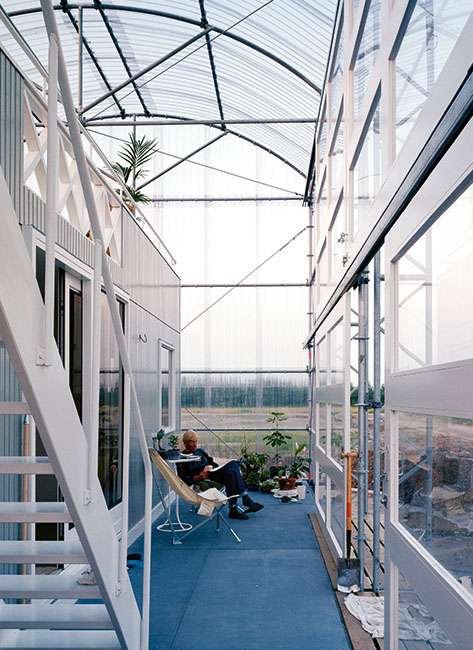The Typology of the Intermediate Climate
de typologie van het tussenklimaat
Samenvatting
Een van de prettigste ruimten van mijn huis is het bankje tegen de zuidgevel, naast de schutting en onder het balkon van mijn bovenburen. Normaal gesproken is het in het Nederlandse klimaat uitgesloten om midden oktober zonder jas buiten te zitten, maar op mijn plekje is het minstens 20 graden. In de zomer biedt het balkon boven mij beschutting tegen zon of regen. De eerste lentedagen worden er gevierd en zelfs op sommige droge, maar zonnige winterdagen is het er goed uit te houden. Die plek van een paar vierkante meter vormt een overgangsruimte tussen het gecontroleerde binnenklimaat van mijn woning en het in onze klimaatzone snel wisselende buitenklimaat van mijn tuin.
In de architectuur bestaat een complete typologische familie van dergelijke overgangsruimten met de serre en het atrium als belangrijkste hoofdtypen. Ze vormen een buffer tussen het buiten- en binnenklimaat, maar ze bieden ook een additioneel verblijfsgebied met een eigen sfeer en gebruik. Ontstaan vanuit motieven ten aanzien van het wooncomfort en bescherming tegen regen, warmte en wind, kunnen dergelijke overgangsruimten ook uitstekend worden toegepast als zogenaamd passief duurzaamheidssysteem. Anders dan het merendeel van de gangbare duurzaamheidstechnieken en -systemen, is de overgangsruimte primair ruimtelijk en niet (installatie)technisch van aard. Als er al een architectuur van duurzaamheid bestaat, dan speelt de overgangsruimte daarin een belangrijke rol.



